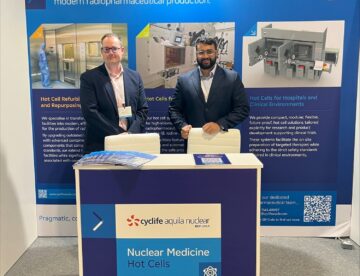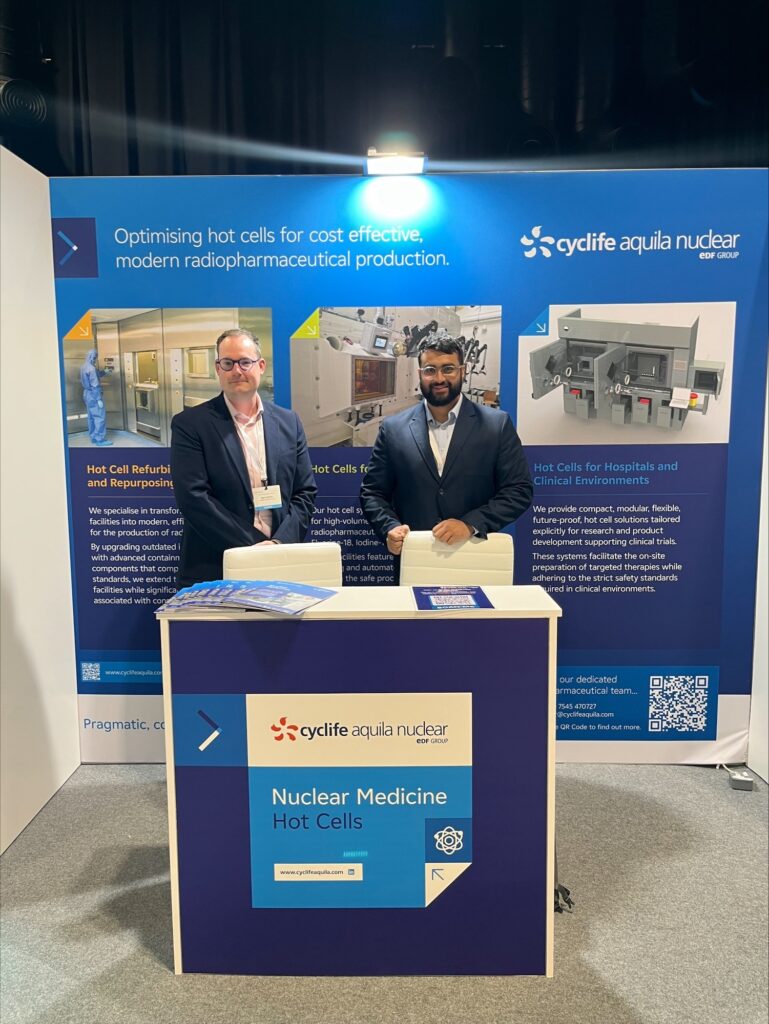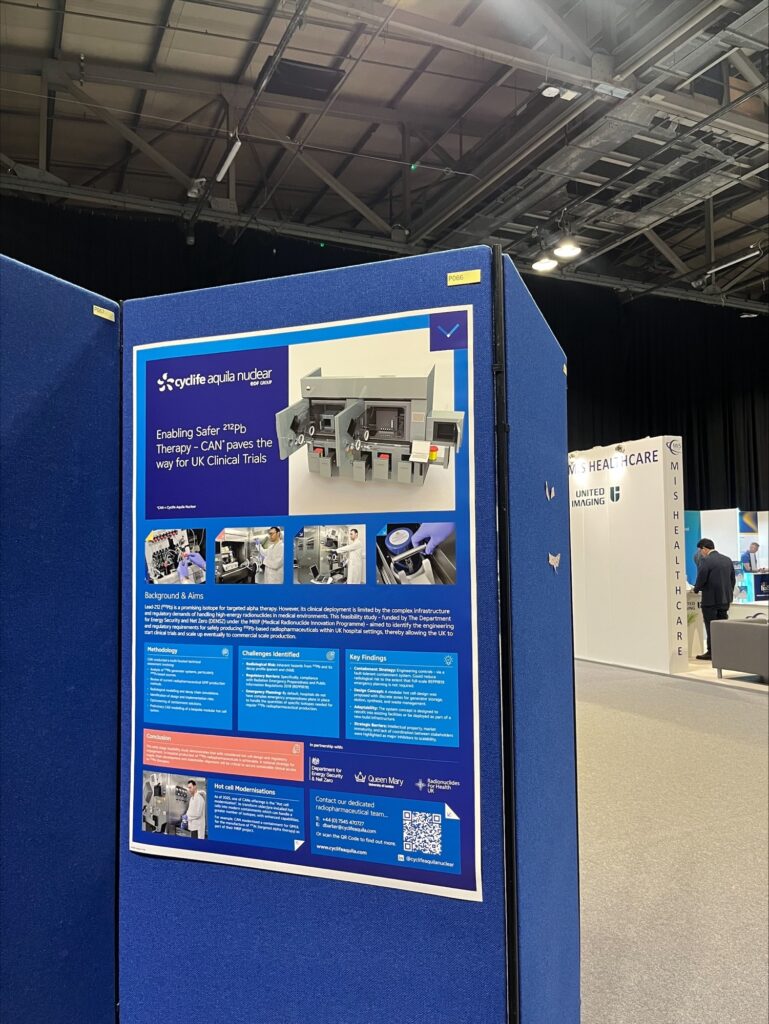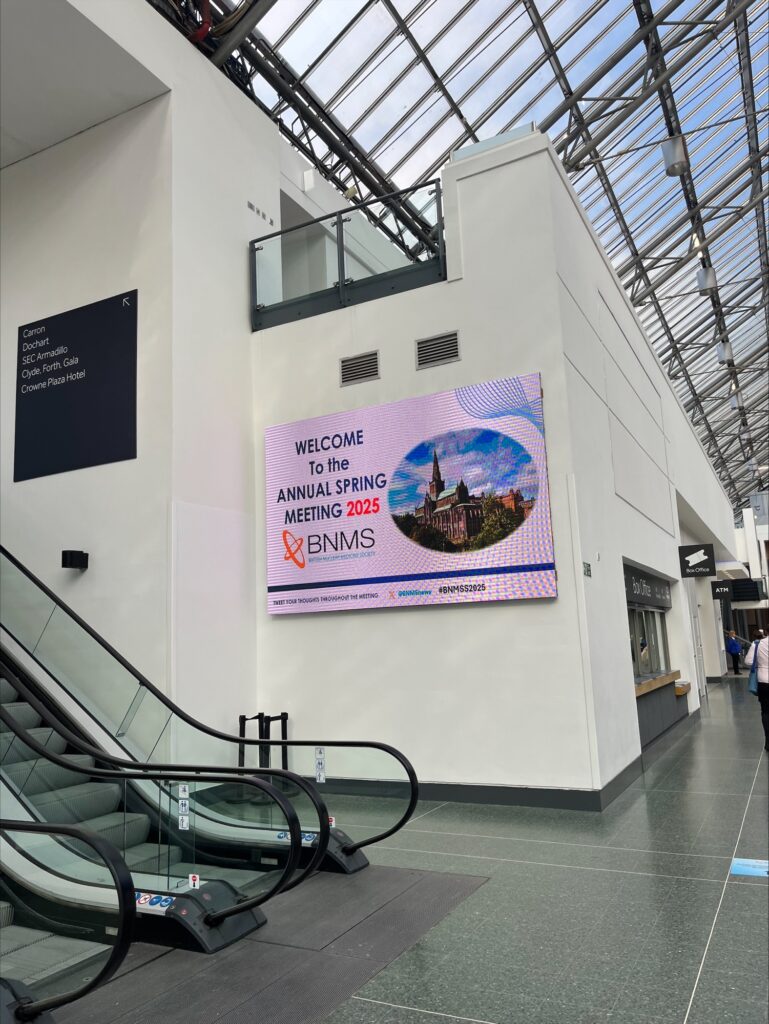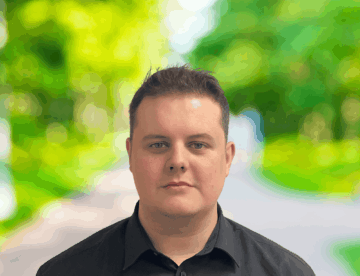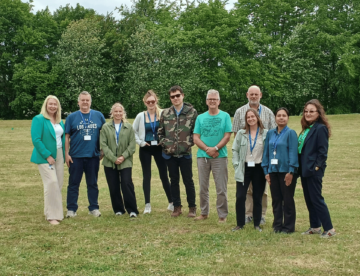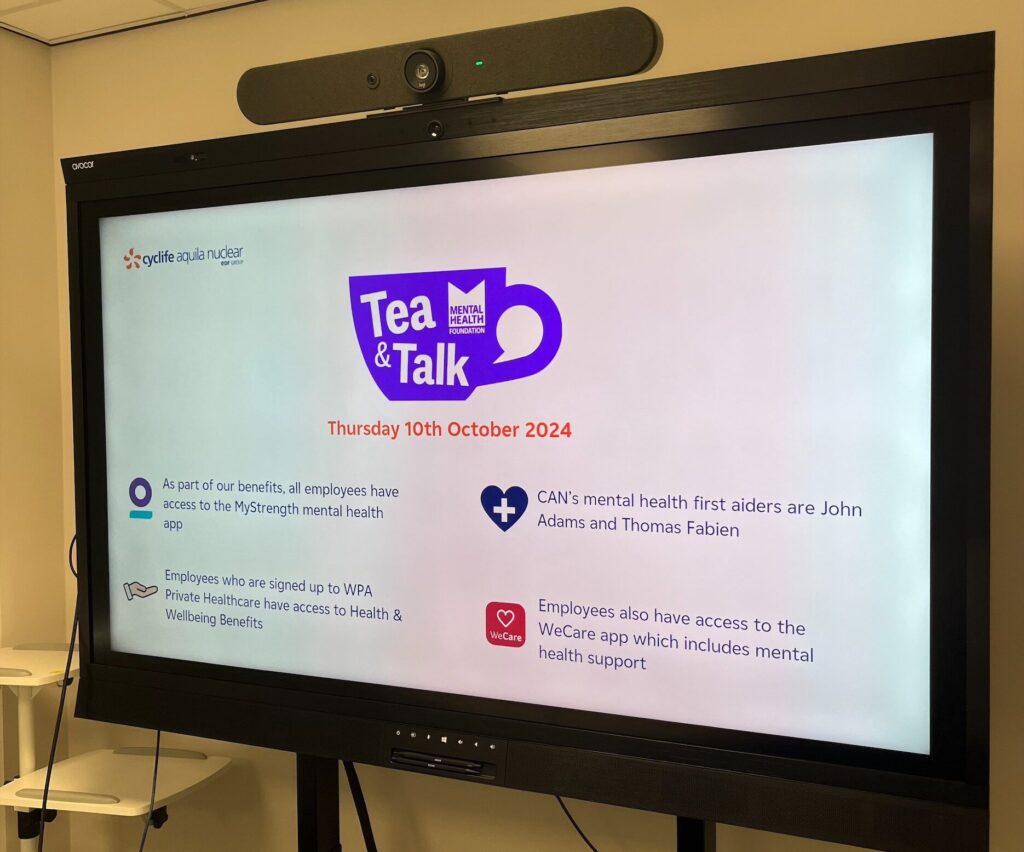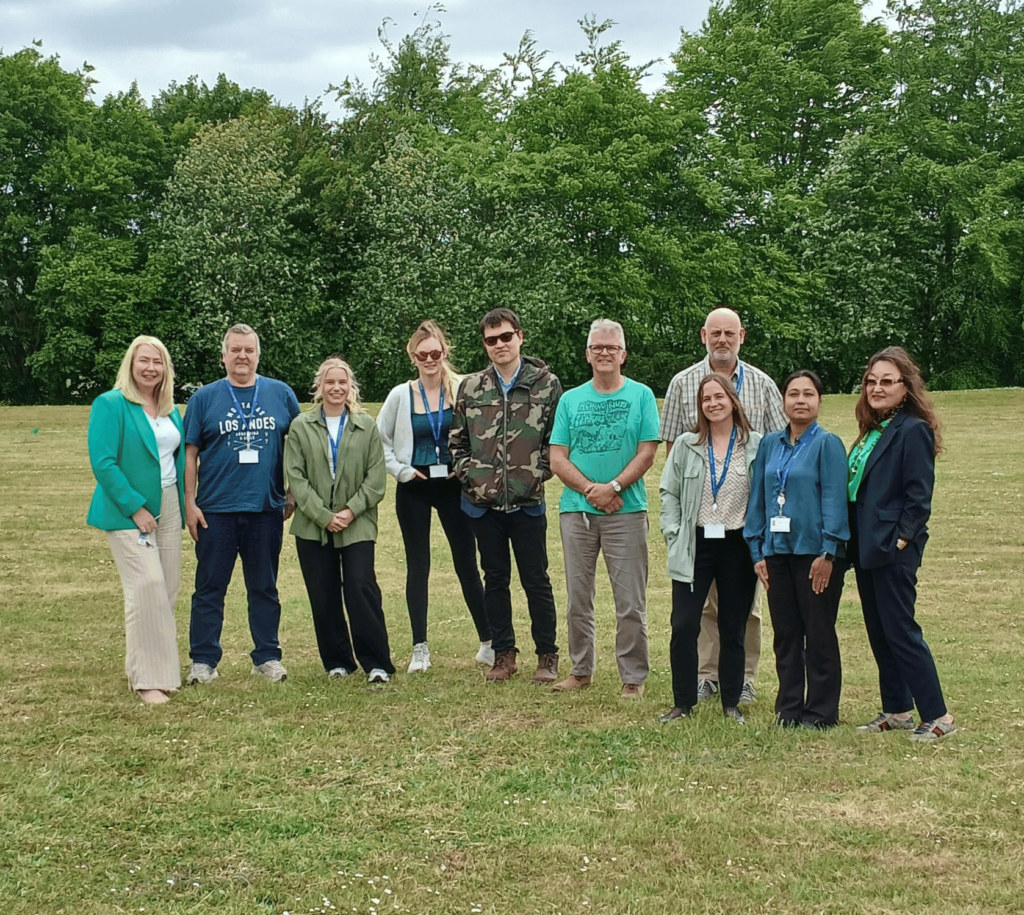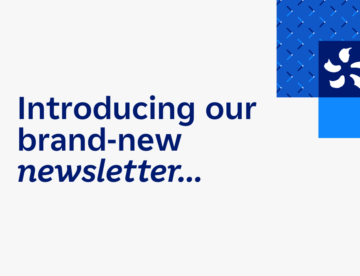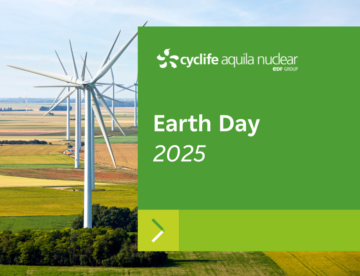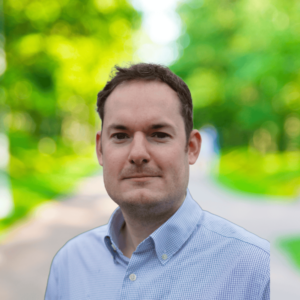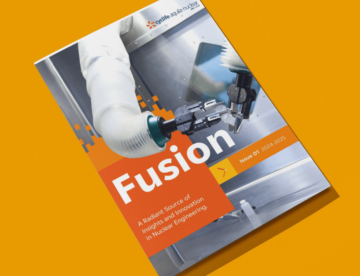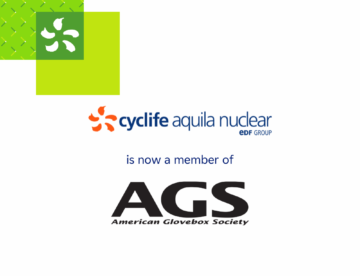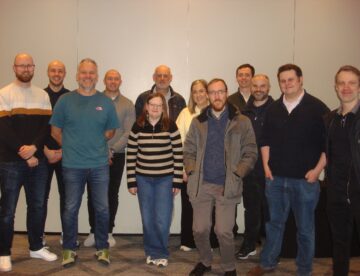BNMS Annual Spring Meeting 2025
We had a fantastic time at the British Nuclear Medicine Society (BNMS) Annual Spring Meeting in Glasgow last week!
Our Scientific Officer, Amin Choudhury, Head of Commercial, Steve Barker and Marketing and Communications Coordinator, Melissa Gilbert all attended the event. It was a great opportunity for our team to connect with professionals and showcase our capabilities in the nuclear medicine sector. Amin was able to attend insightful presentations and talks focused on the latest research, innovations, and practices, while also strengthening our relationship with existing clients.
We also had the opportunity to deliver a poster presentation on our work on the Medical Radionuclide Innovation Programme (MRIP) funded by the Department for Energy Security and Net Zero (DESNZ). This programme aims to identify the engineering and regulatory requirements for safely producing 212Pb-based radiopharmaceuticals within UK hospital settings.
We really enjoyed this year’s Spring meeting and already looking forward to the Autumn meeting!
Mental Health Awareness Week 2025
This week is Mental Health Awareness Week. Mental health has commonly been referred to as a taboo subject, but this campaign helps to break the stigma of talking about mental health and promotes open conversations. In England, it’s estimated that about 1 in 4 of us will experience a mental health problem at some point each year1. Research shows that adults are feeling lonelier, with 7.8% of adults in the UK feeling lonely ‘always or often’ in 20242. These statistics highlight the importance of mental health support, whether that is support from your GP, community or workplace.
This year’s mental health awareness week campaign theme is ‘Community’ which aims to highlight the importance of having people around you to talk to. Communities connect and support us, giving us a sense of belonging and purpose. For example, a workplace can be a community and ensuring employees are supported with their mental health in the workplace is fundamental. In 2022, mental health was the 5th most common reason given for sickness absence, accounting for 7.9% of occurrences3.
At CAN, we ensure that we are always supporting our employees. Last year, we hosted a number of initiatives that aimed to improve mental wellbeing in the workplace. In June, we hosted a self-care meditation session, in October and on World Mental Health Day, we hosted a ‘Tea&Talk’ event where employees met for some tea and cake and had the opportunity to have open conversations about mental health and what other things that we, as a company, can do to support, which was incredibly insightful. We also have mental health first aiders on-site who are available to provide support to anyone who needs it.
This year, to commemorate Mental Health Awareness Week, we sent out a number of resources to our employees on mental health topics, including helplines and recommended apps (some of which are a part of our benefit scheme). We also participated in ‘Wear it Green’ Day, where we encouraged our employees to wear Green to show their support and raise awareness of this campaign.
As a company, we pride ourselves on the support we give to our employees, but we are always working on ways in which we can continuously improve.
- McManus S., Bebbington P., Jenkins R. and Brugha T. (2016) Mental health and wellbeing in England: Adult Psychiatric Morbidity Survey 2014. Available from: https://digital.nhs.uk/data-and-information/publications/statistical/adult-psychiatric-morbidity-survey/adult-psychiatric-morbidity-survey-survey-of-mental-health-and-wellbeing-england-2014
- (2024a) UK measures of national well-being dashboard. Available from: https://www.ons.gov.uk/peoplepopulationandcommunity/wellbeing/articles/ukmeasuresofnationalwellbeing/dashboard
- Office for National Statistics (ONS), released 26 April 2023, ONS website, article, https://www.ons.gov.uk/employmentandlabourmarket/peopleinwork/labourproductivity/articles/sicknessabsenceinthelabourmarket/2022
Introducing our brand new newsletter…
Earlier this month, we launched our brand-new Cyclife Aquila Nuclear newsletter!
The newleetter will be your go-to source for all the latest news and updates from the business. Each edition will feature:
- Company News
- Project Updates
- Exciting Job Opportunities
- Upcoming Initiatives and Partnerships
We are incredibly excited to grow our community, share key achievements and keep you up to date with all things CAN!
You can sign up using the form here: Would you like to subscribe to our mailing list? – Cyclife Aquila Nuclear | EDF Group
A greener pathway? Nuclear is the answer…
Written by Steve Barker, Head of Commercial
Having worked in nuclear for 8 years and having had the benefit of learning about it at a young age, the path to a sustainable future is clear to me, we need to be utilising energy sources with minimal environmental impact. Whilst renewable energy sources such as wind and solar are essential, nuclear power also has a crucial role to play in the transition to a greener world.
It’s already proven that nuclear generates electricity that produces virtually no carbon emissions during operation, making it one of the cleanest energy sources available. As we look to reduce our dependence on fossil fuels, nuclear energy offers a stable, reliable alternative that complements fluctuating energy sources such as wind and solar. Unlike renewables, which are dependent on weather and daylight and therefore have limited availability, nuclear energy provides constant power around the clock.
Then consider that advances in nuclear technology, including small modular reactors (SMRs) and ongoing research into nuclear fusion, are moving nuclear energy into a new era of safety and efficiency. These technologies address traditional concerns about waste and safety and will provide a cleaner, more adaptable energy source for different locations around the UK. SMR plants have a smaller footprint and can be deployed close to demand centres, reducing transmission losses and increasing energy security.
Regardless of your opinion on nuclear power, the stakes are high in the climate crisis. With what scientists are forecasting, ruling out low-carbon options like nuclear power could have devastating consequences for us.
I’ll continue to advocate that utilising nuclear energy together with renewables improves our chances of a sustainable, low-carbon future. And given these potential benefits, the question is not why nuclear energy should be considered, but why it is not already at the centre of our sustainability effort?
Our brand-new annual magazine – CAN Fusion!
We are thrilled to announce our brand-new annual magazine, the CAN Fusion Magazine! Packed with exciting news, project updates, employee interviews, and our goals for 2025, this magazine reflects our incredible journey from 2024 and looks forward to what is to come this year.
Thank you to our colleagues who helped write some of the articles and also our amazing design team, The Glow Studio!
We are incredibly excited to share last year’s highlights and achievements with you all.
You can access the magazine here: CAN Fusion Magazine 2024-2025
CAN becomes a member of the American Glovebox Society (AGS) and joins the Technical Standards Overview Committee (TSOC)
As part of the continual development of one of our core specialisms, Gloveboxes, CAN have recently joined two organisations to further our capability and contribution to the discipline.
The National Nuclear Glove Box Forum (NNGF), part of the Nuclear Institute, is the working group for UK experts to share learning and relevant good practice on matters relating to glove box containment systems. CAN are not eligible to join (membership is limited to glovebox operators only) however, alongside the introduction of the new UK Alpha Resilience and Capability (ARC) programme standards a sub-forum for users of the standard has been set-up. As CAN are already embracing the implementation of these standards on live Projects, it was clear that we should join the (Technical Standards Oversight Committee (TSOC). Our Containment TAC group recently participated in the first TSOC meeting, to engage with the wider community around the exciting step change in approach to special nuclear material (SNM) glovebox supply that the ARC standards layout. Participation will allow us to be part of the conversation, sharing Learning from Experience (LFE) and providing input into the direction of the new UK industry standard for gloveboxes.
Similar to the NNGF, the American Glovebox Society (AGS) are the principal US glovebox organisation and owners of a number of guidelines/standards that present best practice in America. While CAN may not be as intimate with the US industry standard, the AGS present a huge resource of knowledge and experience that we can benefit from. Becoming a member is the first step towards enhancing the breadth of our knowledge and allowing us to widen our range of experience that we can draw on to the benefit of projects.
You can find out more about of our previous projects here, including our gloveboxes: Case Studies – Cyclife Aquila Nuclear | EDF Group
CAN X UKNNL Team Building Session
Last week, employees from CAN and Cyclife UK attended a team-building workshop with colleagues from United Kingdom National Nuclear Laboratory (UKNNL) at the Park Royal Hotel in Warrington!
The workshop provided an opportunity for the project team members to get to know each other and build connections outside of the workplace. Events like this provide our team with the opportunity to strengthen client relationships and build lasting partnerships for future collaborations.
Thanks again to UKNNL and Cyclife UK for a fantastic day!

